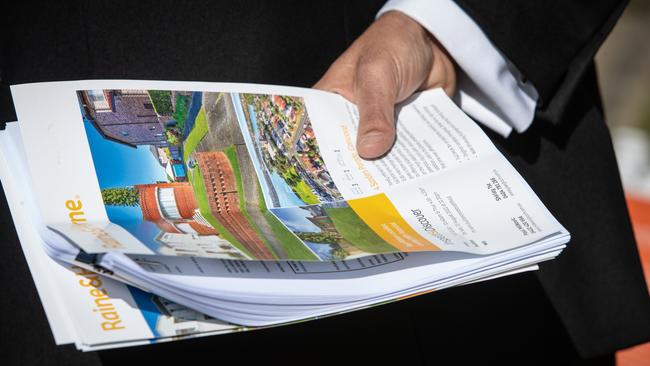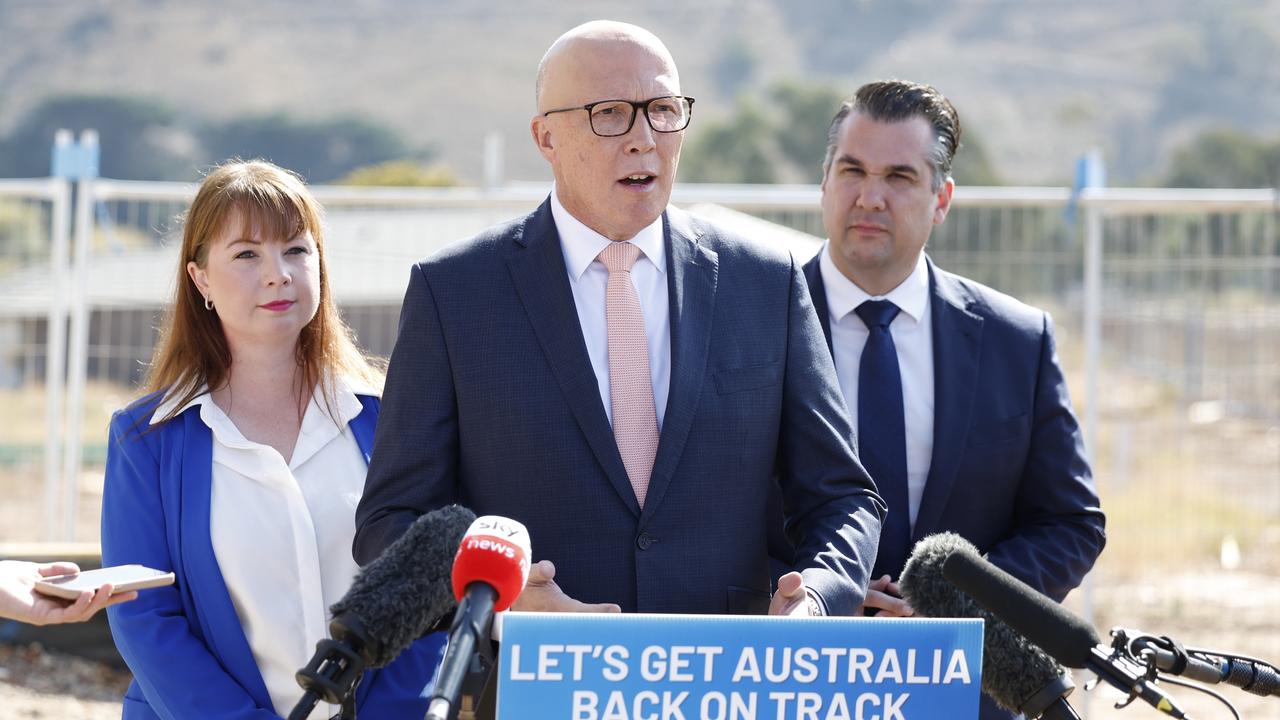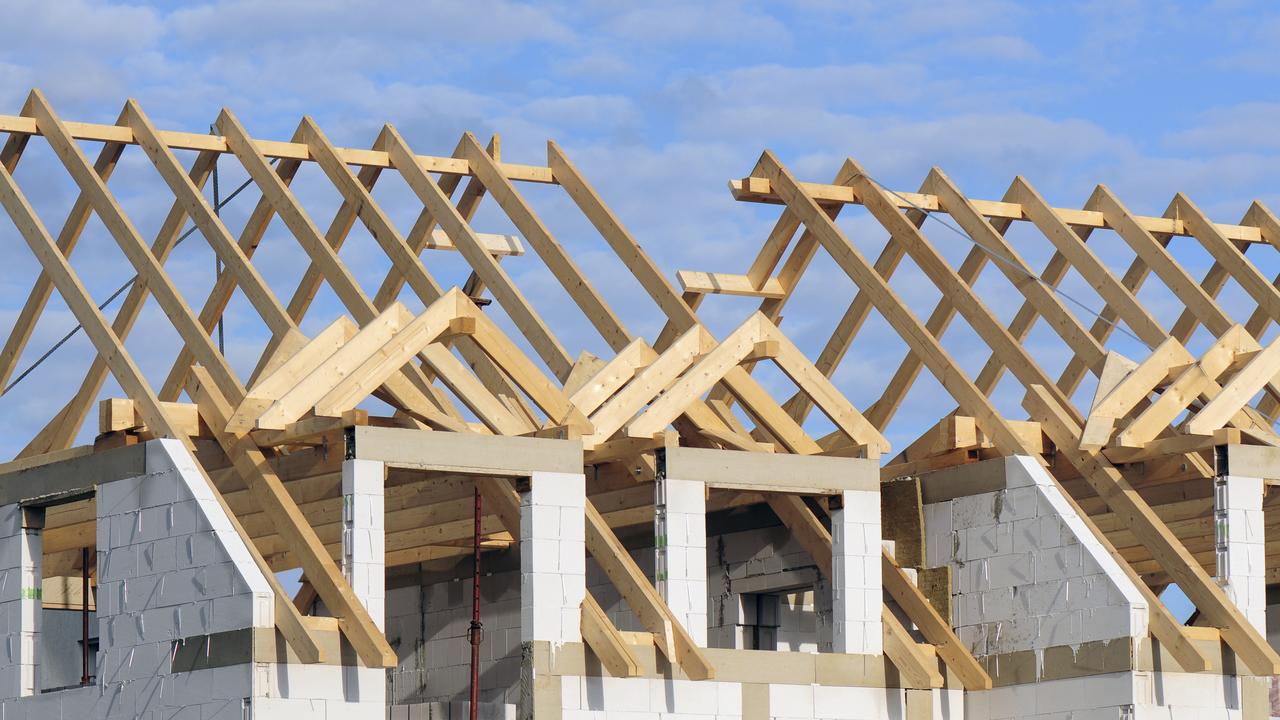Reserve Bank modelling shows 20 per cent fall in national house prices under downside scenario
Documents released under Freedom of Information laws detail the central bank’s concerns over weakness in the housing market.

Home prices could drop by 20 per cent from the peak in just over two years if pessimism takes hold in the property market, according to an internal assessment by the Reserve Bank of Australia.
The fallout from this “downside housing price scenario” would hit both broader consumer consumption and the hard-pressed building industry, with real estate agents already seeing big shifts on the ground.
Bank documents released under Freedom of Information showed its concerns about recent weakness in housing prices, particularly in Sydney and Melbourne, and the effect this is having on dwelling investment.
The documents showed that national housing prices unexpectedly fell in the June quarter, reflecting declines in the two major capitals, as auction volumes and clearance rates in these cities dropped.
The bank is assuming that price falls in Sydney and Melbourne continue over the second half of this year, with its central case scenario for prices in those cities expected to be off by around 1-and-a-half per cent per month.
It said that at the same time, price growth has slowed in other capital cities and regional areas, and this is expected to continue into next year and prices in these markets would also drop.
The base case would be for national housing prices to decline by 11 per cent peak-to-trough by late 2023, and also hit residential construction.

The internal documents said “a steeper cash rate path and declining housing prices are expected to deter demand for new housing which weighs on dwelling investment further out.”
But in the RBA’s downside housing price scenario, where people become pessimistic about the outlook, then housing prices would plunge by 20 per cent peak-to-trough by the end of 2024.
The bank documents said this is roughly twice as large as what it had assumed in its baseline case, and sits below the range of estimates from its models and most market economists.
“This would have an effect on both dwelling investment, especially later in the forecast horizon, and consumption,” the documents warned.
After a long bull market, real estate agents are doing it tough as stock levels dip, interest rates rise and vendors refuse to budge on over ambitious price expectations.
Late last week the listed McGrath Estate Agents warned of an earnings hit, while Ray White Double Bay managing director Elliott Placks opened up about the difficulties for younger agents operating in tougher markets in a revealing interview with The Australian.
“Owners’ expectations have to adjust and agents’ behaviour has to adjust,” Mr Placks said.
Property has experienced a rising bull market for the past six or seven years.
“Some agents have not had to deal with harder times before,” the experienced real estate agent said.

Ray White Double Bay has recently reduced numbers from 40 agents and associates to 38.
“It’s hard work and (for some) the industry is not for them,” said Mr Placks, adding that the agency’s listings are down on last year by about 30 per cent but are lineball with the amount of listings it achieved in 2019.
Mr Placks said Ray White Double Bay is marketing 17 Village High Rd, Vaucluse with an asking price of $20m on behalf of an Australian Chinese who is selling to downsize. The six bedroom house was built just over four years ago and has views of the Harbour Bridge.
Meanwhile, the listed McGrath Estate Agents warned the market late last week that its underlying earnings before interest, tax, depreciation and amortisation would be at least 50 per cent lower in this half than the corresponding period last year.
The company blamed interest rate rises since August for dragging out the challenging market conditions.
“The property market is taking a widely expected and much needed breather after rapid growth over the last three years,” McGrath chief executive John McGrath said.
Mr McGrath said there had been a late start to the Spring selling season and there is still some uncertainty as to whether we will see a late surge of activity as in previous years.
“However there are green shoots appearing despite the difficult market conditions, with sellers now more prepared to meet the market,” he said.
Home listings are about 15 per cent lower than the previous five-year average, while at the same time average residential selling prices have dropped.
NSW has been the hardest hit by both heavy falls in both property sales volume and aggregate value, according to property exchange PEXA.
Chief executive of listed real estate firm The Agency, Geoff Lucas, said that there was “a number of forces at play” in the property market. He acknowledged that sales volumes in some markets were down, notably there was significant falls in Brisbane and Sydney, but he also pointed to rises in Adelaide and Perth, and relatively small falls in Melbourne.

He said that there had been an improvement in sentiment after the Reserve Bank had lifted rates by just 25 basis points earlier this month.
“All of a sudden buyers started to put their hands out and start to think there is an end in sight for the rate tightening cycle,” he said. Buyers were moving rather than waiting six to nine months for price drops to bottom out. “We’re starting to see some of that,” he said.
However, he cautioned that high global inflation could have an influence and shifting mortgage rates would also play a role.
Commercial real estate volumes are also down as investors stay on the sidelines in the face of uncertainty about values. But there are not yet widespread job cuts.
“I think its too early to say downturns always impact agent numbers but we don’t really know how long and deep this downturn will be and what it will do to transaction volumes,” one real estate chief said.
“As always the quality agents that work hard will survive and continue to do deals,” he said. “Agents make money in good and bad markets; we just need to get through this stagnant period.”





